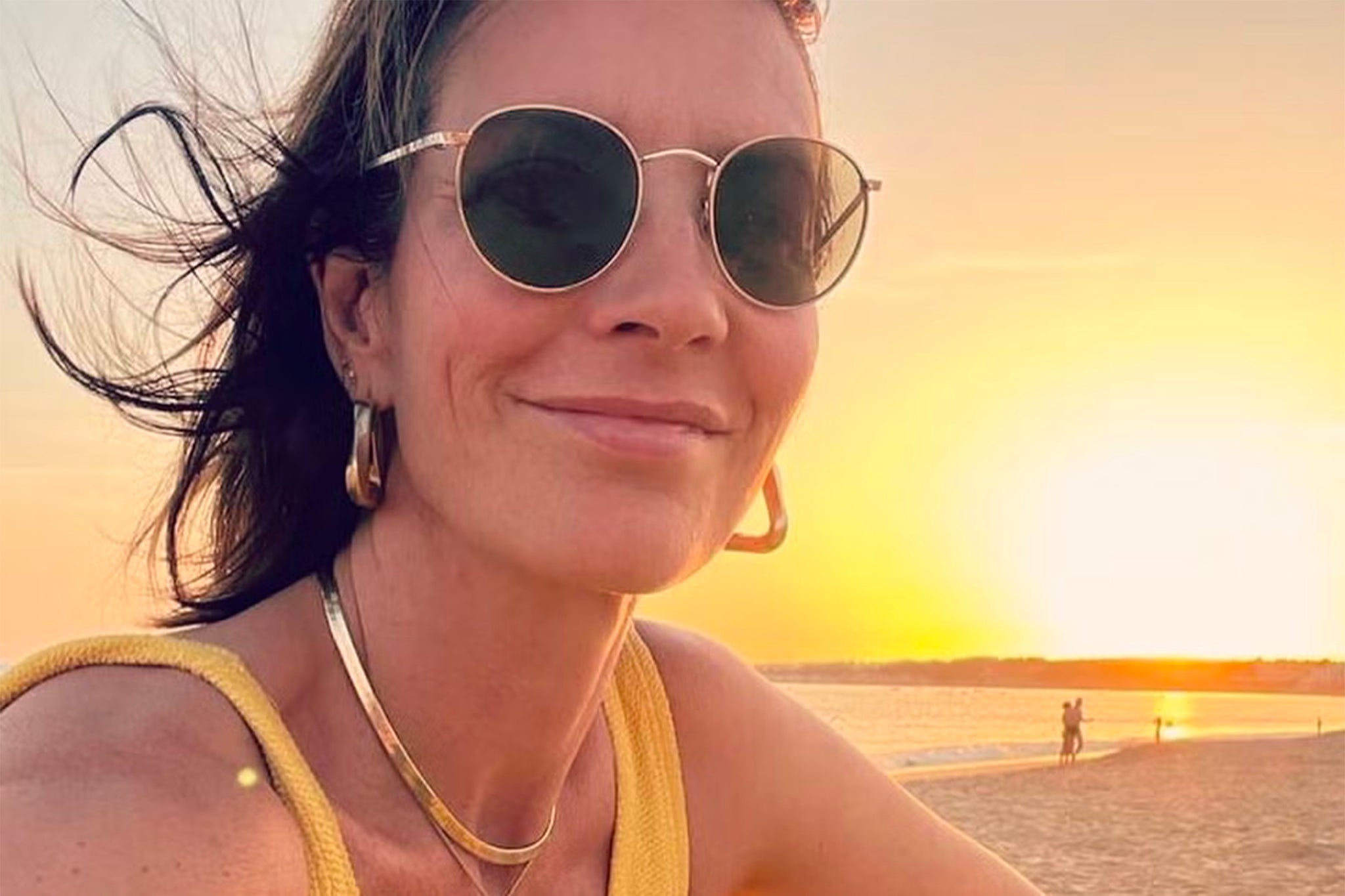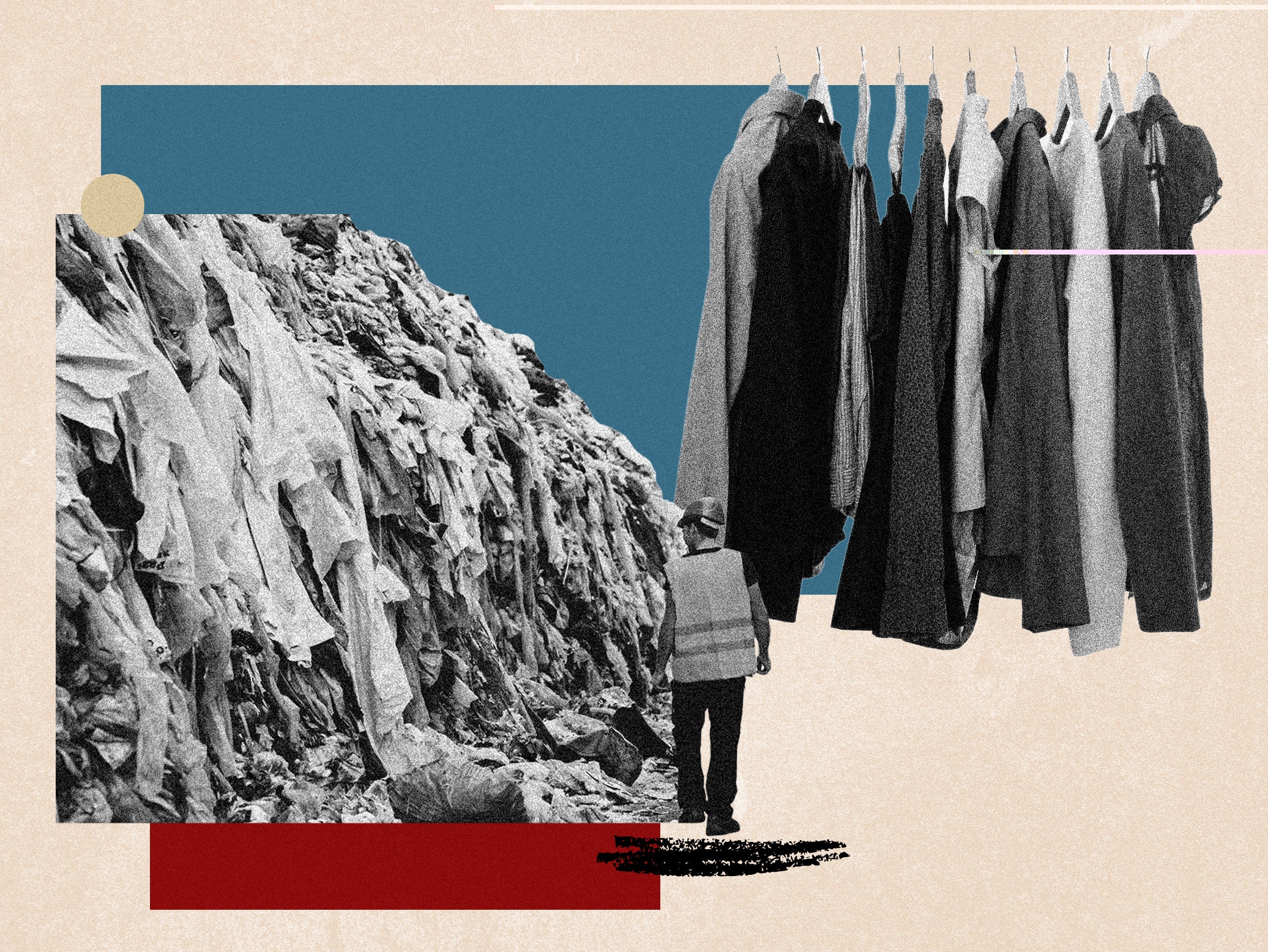I’m a style editor who tried to only buy five things this year – so how did I do?
It was the eco-challenge that went viral and Melanie Rickey couldn’t resist. But, in an effort to make a stand against fast fashion, could she really cope with buying less than 10 items of clothing in 12 months?


For years now I’ve been actively curious about how we can make fashion sustainability feel compelling and exciting rather than abstemious and joyless. As a fashion editor who loves beautiful things and appreciates great design and who, until recently, always wanted that next thing, I know we are getting our fashion consumption all wrong. But could I find a fun new way of approaching it that could work for us all? No, not at first.
In the face of rampant consumerism, a warming planet, and the arguments about the pace of phasing out of fossil fuels at Cop28, imagine a new world order where everyone limits their clothing purchases to five fabulous items per year.
Scientist says this could help prevent the planet from warming more than 1.5 degrees above pre-industrial levels. If we did this, would it send you running to the nearest Zara? Or would you be secretly pleased that you’d been given a framework to manage your fashion habits, and in turn be part of the climate solution?
I know people in both camps. I’m in the latter, which is why at the start of this year I decided to sign up to a challenge called the Rule of Five, set by the journalist Tiffanie Darke (@tiffdarke). I wanted to see how I would feel about not satisfying my love for new clothes whenever the mood took me – plus if it helps the planet, then why not?
The science behind the recommendation of just buying five items first emerged from a stark 2022 report “Unfit, Unfair, Unfashionable” by the Hot or Cool Institute, a Berlin-based think tank that crunches the climate numbers and offers science-based solutions to direct people towards a more sustainable lifestyle.
When I read the report, if I’m honest, the graphs and numbers blurred in front of my eyes as I tried to understand the complexity of the research, but the main takeaway was simple. If we want to try and live a 1.5-degree lifestyle, we each need to cut the annual carbon emissions generated by our wardrobes to 128.7kg a year. How do we do this? Again, the answer is completely straightforward. Wear our existing clothes more, repair and care for items to keep them in use and buy less new clothes – ideally five items a year.
But what does building a sustainable wardrobe really look like? Do you even know? Not many people do. It’s such a thorny issue. Is it buying something from the high street that has a “sustainable materials” tag? Is it shopping for secondhand clothes? Renting catwalk pieces from businesses like Hurr or My Wardrobe HQ? Selling on your old clothes into the circular economy to replace them with new pieces? Or is it buying fewer cheaper items in favour of one or two better quality, longer-lasting pieces? I would argue that it is even easier than all of that: work out what you need and love, choose it carefully by making the hunt for it fun, and when you get it, wear it – a lot.
Lingerie, hosiery and socks are not included, but five is still a tiny number of pieces. Where is the fun in that? Turns out, there was a lot, but it was less about shopping and more about appreciating what I already had, and plugging the gaps in an intentional way. It’s always better when you have to wait for it, right?

It’s a practice I’ve come to call enoughness, and it can spring as much from prioritising mental and fiscal wellbeing as it can from fashion and design intelligence. It’s the idea that if we follow our inner knowing of what we need to look and feel great, and it serves our needs in the best possible way, it’s already perfectly sufficient for the life we want to live. It’s a mind shift, yes, but it works. After all, if we have exactly what we need, who needs more? It goes back to the Victorian saying: “I’ve had an elegant sufficiency, any more would be superfluity.”
What it doesn’t come from is responding to comparison culture, status anxiety, and global marketing campaigns from luxury fashion houses and high street retailers designed to get us to cross the line, even when we don’t need, or can’t afford to. Don’t get me wrong, though I love a Chanel, or Balenciaga fest as much as the next fashionista, and intend to own a Phoebe Philo piece at some point, but today I don’t need to act on it (unless I carefully choose to).
Following the Rule of Five (you can find the rules on Tiffanie’s substack) I learned a lot about my old shopping habits. First, that I acquired clothes as much for the feel-good dopamine spike when I hit “buy”, as I did for the thrill of feeling amazing in my shiny new thing. Often, I’d wear my new purchases only a few times before stashing them in my wardrobe and moving on to the next buy, and the next hit. Shopping, for me, is an addiction of sorts, and we all have skin in the game.
Magazines might be less influential now, but Instagram and TikTok are the new pushers of stuff, and it is easier to buy at the click of a button with barely a thought as to the consequences than it ever was before. This, I discovered, in my year of buying less, is the main habit that I, and I wager all of us, need to break.
So, how did I fare in the Rule of Five? Dear reader, I failed. But not miserably so. I bought eight things, and, hand on heart, each one has improved my life in one way or another.
My first task to complete for the Rule of Five was to take an inventory of everything I already owned. Last January I flung open the doors of my wardrobe and took a long hard look at what I no longer wore, finding several unworn items – typically 25 per cent of our wardrobe’s contents. I sold several pieces on the luxury site Reluxe, and many more on eBay. I also rediscovered an old Balenciaga coat, which no longer fitted across the shoulders. A local tailor let out the seams, and voila! I had a new coat.

Turns out my wardrobe was well stocked with tailoring, party dresses, and statement fashion pieces accumulated over my years as a fashion editor. Looking at my new streamlined wardrobe, and, crucially, knowing what was actually in it, made not shopping easy for me for almost six months. Though I did succumb to buying a pair of pink zebra stripe boyfriend trousers by one of my favourite designers Marques Almeida. I pre-ordered them in January, and they arrived in June. Waiting for them to get made and sent was an anticipatory pleasure that taught me to appreciate slow fashion over fast fashion.
As summer rolled around, I realised my swimwear situation was dire, with a ragtag selection of bikinis bought in the years after my son was born; now shapeless and too big. My second and third purchases of 2023 were a yellow and a green bikini from &Other Stories, which I wore all summer on rotation.
Next, I addressed my summer capsule wardrobe. While I had rediscovered a selection of pretty summer dresses in my wardrobe inventory, I found I had no decent shorts or tank tops for summery beach days. This inspired me to discover a brand that had been targeting me on Instagram: Colorful Standard. It’s a bit like Gap but cut very well and all their pieces are made in Portugal using organic cotton. I visited their store, tried on loads of things and bought two tank tops in lavender and black, and two pairs of their organic twill shorts, one in olive green and the other in pale pink – which are cut wide-legged, all the better to give the impression of long, slim legs. Love!
By now, I’d already broken the rule of five and had bought seven things, but I reasoned I would be wearing them for many years to come. My last purchase of 2023 was an olive-green wool/alpaca jumper from Arket, which cost £97, and has since sold out - though there are still pale grey and dark brown versions available. As a writer glued to her desk, it’s the only thing I need to stay cosy right now, and as for cost per wear, it’s earning its keep as long as I keep wearing it.
So, there you have it, eight pieces that improved my summer and winter style vibes and my bank balance. The Rule of Five helped me learn the value of having exactly what I need, and nothing more. This, above all else, has been my big win of the year.






Join our commenting forum
Join thought-provoking conversations, follow other Independent readers and see their replies
Comments